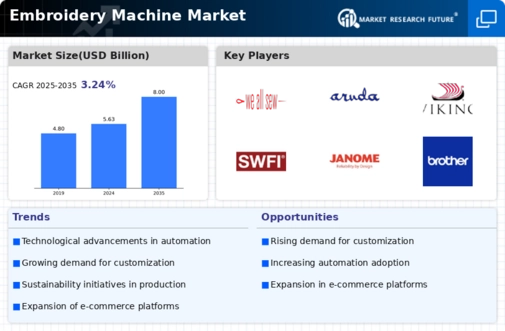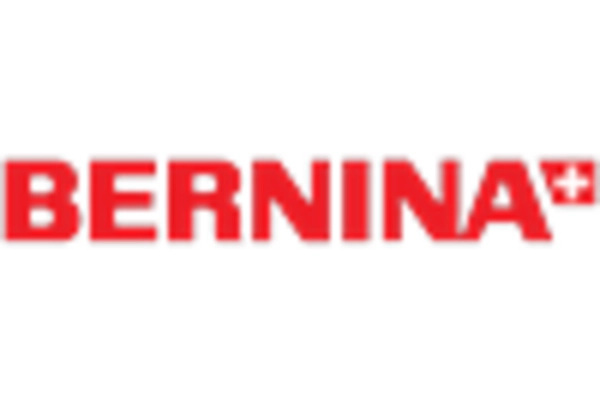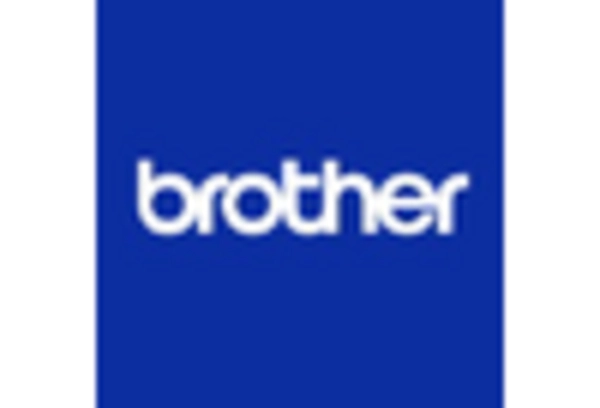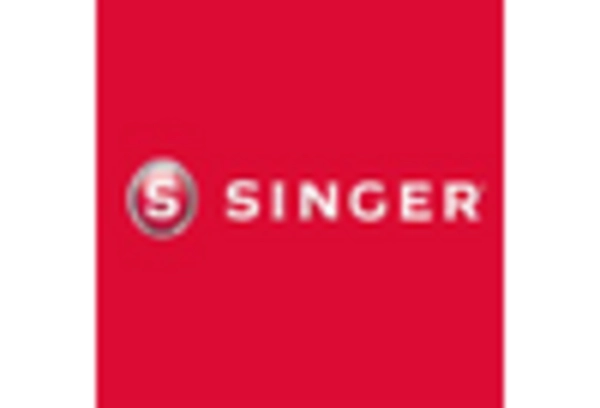Growth of Home-Based Businesses
The rise of home-based businesses is a notable driver in the Embroidery Machine Market. As more individuals pursue entrepreneurship, particularly in the crafting and apparel sectors, there is an increasing demand for affordable and efficient embroidery machines. This trend is supported by the growing popularity of online platforms that facilitate the sale of custom-made products. Market data suggests that the home-based business segment is expanding at a rate of 6% annually, indicating a robust opportunity for manufacturers to target this demographic. Consequently, the Embroidery Machine Market is likely to see a surge in demand for compact, user-friendly machines that cater to hobbyists and small business owners.
Rising Demand for Customization
The Embroidery Machine Market experiences a notable surge in demand for customized products. Consumers increasingly seek personalized items, ranging from apparel to home decor, which drives manufacturers to invest in advanced embroidery technologies. This trend is particularly evident in sectors such as fashion and promotional merchandise, where unique designs can significantly enhance brand identity. According to recent data, the customization segment is projected to grow at a compound annual growth rate of approximately 7% over the next five years. As businesses strive to meet consumer preferences, the need for versatile embroidery machines capable of producing intricate designs becomes paramount, thereby propelling the Embroidery Machine Market forward.
Integration of Automation and AI
The integration of automation and artificial intelligence in the Embroidery Machine Market is transforming production processes. Automated embroidery machines enhance efficiency, reduce labor costs, and improve precision, which is crucial for meeting the increasing production demands. AI-driven technologies enable machines to learn from previous designs, optimizing the embroidery process and minimizing errors. This technological evolution is expected to contribute to a projected market growth of around 5% annually. As manufacturers adopt these innovations, the Embroidery Machine Market is likely to witness a shift towards more sophisticated and user-friendly machines, catering to both small businesses and large-scale manufacturers.
Expansion of the Fashion Industry
The ongoing expansion of the fashion industry significantly influences the Embroidery Machine Market. With the rise of fast fashion and the increasing number of independent designers, there is a heightened demand for embroidery machines that can produce high-quality designs quickly. The fashion sector is projected to grow at a rate of 4% annually, which directly correlates with the need for advanced embroidery solutions. As brands seek to differentiate themselves through unique designs, the Embroidery Machine Market is poised to benefit from this trend, as manufacturers develop machines that cater to the specific needs of fashion designers and retailers.
Increased Focus on Sustainability
The Embroidery Machine Market is witnessing a growing emphasis on sustainability, as consumers and manufacturers alike prioritize eco-friendly practices. This shift is prompting companies to develop machines that utilize sustainable materials and energy-efficient technologies. The demand for sustainable embroidery solutions is expected to rise, with market analysts predicting a growth rate of 5% in this segment over the next few years. As brands strive to align with consumer values, the Embroidery Machine Market is likely to adapt by offering machines that not only meet production needs but also adhere to environmental standards, thereby enhancing their market appeal.


















Leave a Comment